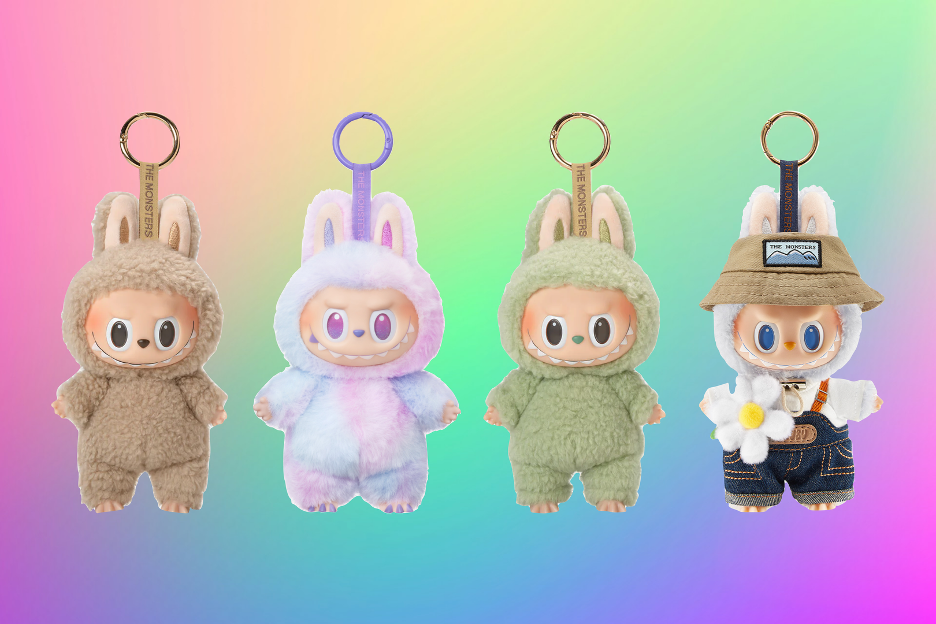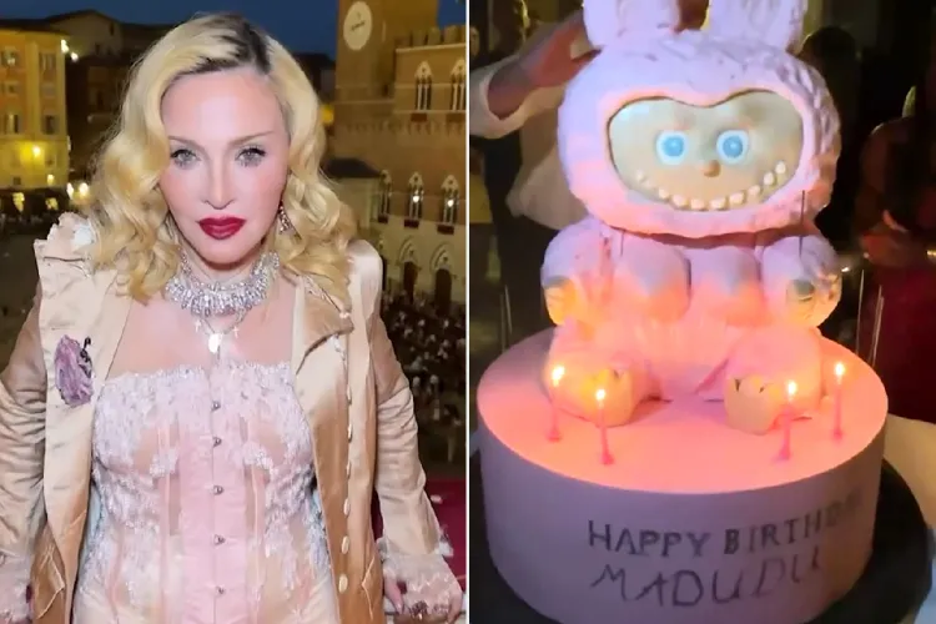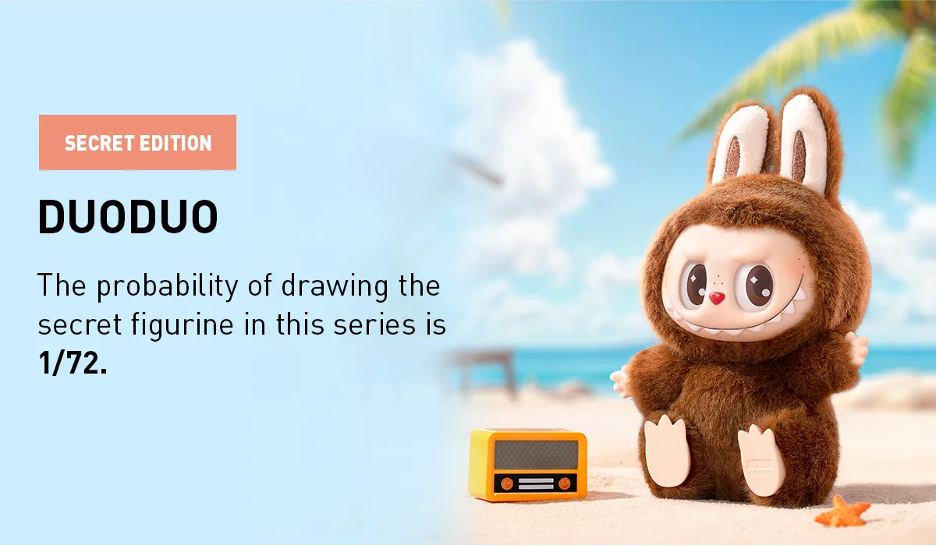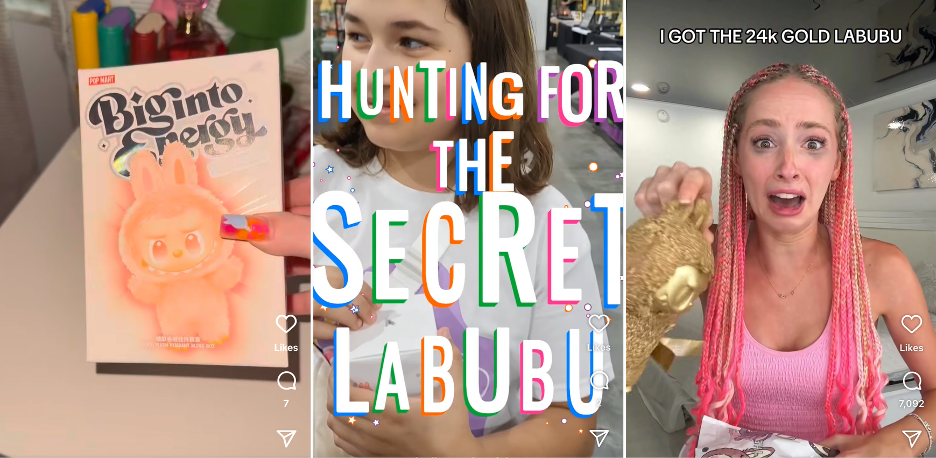Sep 3, 2025
What CPG brands can learn from the plush doll craze about engaging Gen Z—from a Gen Z strategist
by Caroline Massey, Strategist

POP MART / CODIOFUL ON UNSPLASH
Every once in a while, the turbocharged content generator that is social media gives way to a new trend that sticks—one that’s strange enough to grab our attention mid-scroll and relevant enough to capture the hearts (and hate comments) of millions.
This year, that sticky new trend is Labubu: a monster plush doll with bunny ears, big eyes, and a deviously sharp-toothed grin. While these creatures come in a variety of sizes, the most popular ones are small (about 6 inches long) and often toted around as bag charms and keychains or displayed as collectibles.
And most importantly, they. Are. EVERYWHERE.
Little Dolls, BIG Deal
Labubus may seem like another ridiculous “screenager” fad, but there’s no denying that they have become a global sensation.
Created in China and popularized by retail chain Pop Mart, Labubus first took off in East Asia before sweeping the US over the last year and a half, mainly thanks to celebrity endorsements on TikTok and Instagram. Now, it seems like every celeb and mega-influencer has one, from K-pop superstar Lisa to Rihanna, Dua Lipa, Kim Kardashian, and David Beckham. Madonna even had a Labubu-shaped cake custom made for her birthday.

PEOPLE, INSTAGRAM
As demand has skyrocketed out of control, the impish dolls have earned a reputation for being notoriously, maddeningly hard to get. Each limited-edition drop sells out in minutes in stores and just seconds online. Eager fans stand in hours-long lines, even camp outside toy stores overnight, and still come up emptyhanded. Those who strike out turn to resale markets like eBay, where listings often run 2-3 times the original price (NPR).
So What?
Why should your brand care about a weird, frankly ugly toy that blew up on TikTok? People might as well be burning their money, right?
Even if it seems silly, this matters because Labubu’s core consumer isn’t kids. It’s young adults (we’ll use “Gen Z” as a catchall term from here on out).
This demographic holds a massive—and growing—amount of spending power, yet Gen Z as a whole is widely misunderstood in the branding world. I’m an elder Gen Zer myself and, while we may be addicted to our phones, we’re also deeply empathetic and more desperate than ever for meaningful human interaction.
Whether Labubus stick around or disappear into the digital ether by Q4, the craze around them reveals some key truths about young adult consumers: what they want, how they engage, and what it takes to win their loyalty.
How Labubu Engages Gen Z… and How You Can Too
Let’s break down what Labubu gets right, what it reveals about Gen Z consumers, and how brands can use those insights to reach them.
1. Product as Experience

POP MART
Pop Mart isn’t just selling dolls. The real product is the experience that surrounds the dolls—a rollercoaster full of chance, anticipation, surprise, and delight.
How do they do it? Two words: blind box.
The most popular Labubus are sold in blind boxes, meaning you won’t know which figure you’ve bought until you open the packaging. That little game of chance fuels the thrill of “what’s inside?” and “what did you get?,” tapping into childhood nostalgia and the simple joy of surprises.
What It Says about Gen Z: Gen Zers use fun, playfulness, and novelty to cope with a chaotic present and uncertain future. They crave moments of uncomplicated joy and are deeply nostalgic for simpler times.
What It Means for Brands: Experience can matter just as much as the product itself, especially in crowded nonessential spaces. Consider unexpected collaborations, mystery colors/flavors, collectible packaging, or anything else that sparks a sense of fun and wonder.
2. Limited Availability Drives Buzz & Community

The Labubu business model is built on limited-edition drops, creating a level of scarcity that drives demand, conversation, and community all at once.
The frenzy is even louder online, where Labubu seems to have infiltrated every corner of the internet. To date, #labubu has racked up over 3 million TikTok posts, with hundreds of thousands more under related hashtags. That’s millions of videos of people unboxing, trading, collecting, and styling the dolls, turning the chase into a kind of shared drama that anyone can get in on, whether they own a Labubu or not.
What It Says about Gen Z: For them, value isn’t just about owning a product—it’s about cultural connectedness and being in on the moment a product represents. Participating in trends like Labubu is a way to connect with others and show that they’re tuned in to what matters now.
What It Means for Brands: Gen Z consumers crave brands and products that invite them to join in on something bigger. Consider embracing a timely trend or tradition, playful challenges, limited-edition releases, or involving fans in product innovation. Just remember that any trend you hop on MUST be relevant and authentic to your brand.
3. Designed for Self-Expression

INSTYLE / GETTY IMAGES
Labubus are known for their… odd appearance. They look like little gremlins. Sort of cute, sort of creepy, and extremely polarizing.
Strangely enough, that weirdness is the whole point.
The “ugly-cute” aesthetic is perfectly in line with Gen Z’s mentality and humor: ironic, absurd, and deathly allergic to perfection. In the wild, fans double down on the “ugly-cute” of it all by strapping Labubus onto designer bags or styling them as fashion accessories. That glaring contrast between ugly/childish and beautiful/sophisticated is a quirky embrace of authenticity.
What It Says about Gen Z: Their obsession with “ugly-cute” reveals that they care a lot about authenticity and see perfection as overrated and insincere. “Ugly-cute” is their way of flipping the middle finger at conventional taste and hyper-consumerism. They want products that both reaffirm and express who they are as individuals.
What It Means for Brands: The brands that resonate most are those that design, speak, and show up in a way that truly understands their consumer. Try talking directly to your loyalists, crowdsourcing ideas, or diving deep into consumer research.
The Takeaway
The Labubu craze is more than a forgettable microtrend—it’s a masterclass in what resonates with Gen Z: playfulness, connection, and authentic self-expression.
But here’s the thing: you can’t just replicate a Labubu moment. What you can do is lean into experience, build community that feels real, and remember that authenticity isn’t a marketing strategy—it’s a point of connection.
For brands looking to connect with young consumers in a meaningful way, understanding your audience is just the start. But you don’t have to figure it out alone.
Our team at Little Big Brands specializes in translating cultural trends and consumer research into branding that truly gets Gen Z. Let’s build something worth their attention!



